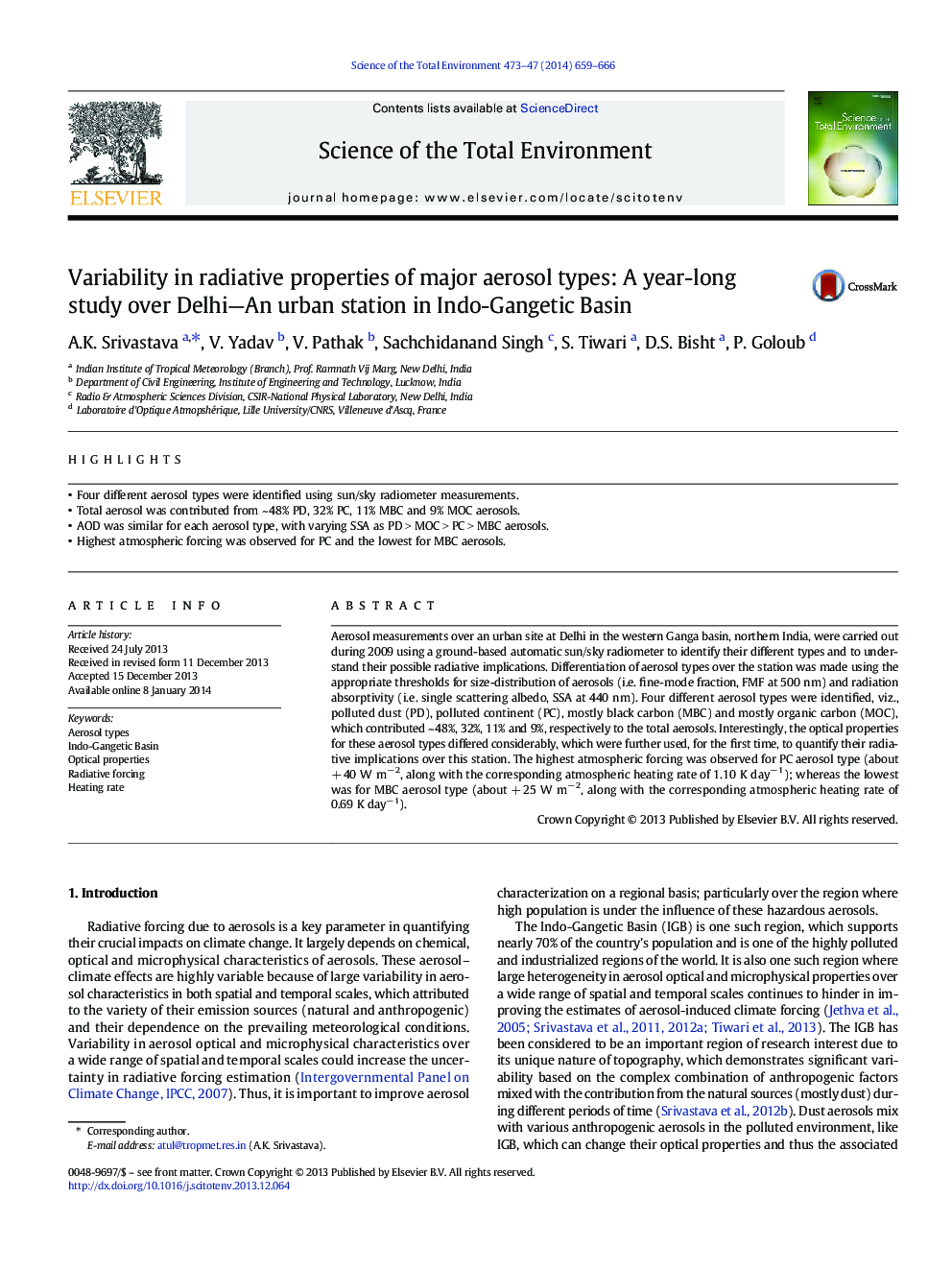| Article ID | Journal | Published Year | Pages | File Type |
|---|---|---|---|---|
| 6331792 | Science of The Total Environment | 2014 | 8 Pages |
Abstract
Aerosol measurements over an urban site at Delhi in the western Ganga basin, northern India, were carried out during 2009 using a ground-based automatic sun/sky radiometer to identify their different types and to understand their possible radiative implications. Differentiation of aerosol types over the station was made using the appropriate thresholds for size-distribution of aerosols (i.e. fine-mode fraction, FMF at 500 nm) and radiation absorptivity (i.e. single scattering albedo, SSA at 440 nm). Four different aerosol types were identified, viz., polluted dust (PD), polluted continent (PC), mostly black carbon (MBC) and mostly organic carbon (MOC), which contributed ~ 48%, 32%, 11% and 9%, respectively to the total aerosols. Interestingly, the optical properties for these aerosol types differed considerably, which were further used, for the first time, to quantify their radiative implications over this station. The highest atmospheric forcing was observed for PC aerosol type (about + 40 W mâ 2, along with the corresponding atmospheric heating rate of 1.10 K dayâ 1); whereas the lowest was for MBC aerosol type (about + 25 W mâ 2, along with the corresponding atmospheric heating rate of 0.69 K dayâ 1).
Related Topics
Life Sciences
Environmental Science
Environmental Chemistry
Authors
A.K. Srivastava, V. Yadav, V. Pathak, Sachchidanand Singh, S. Tiwari, D.S. Bisht, P. Goloub,
